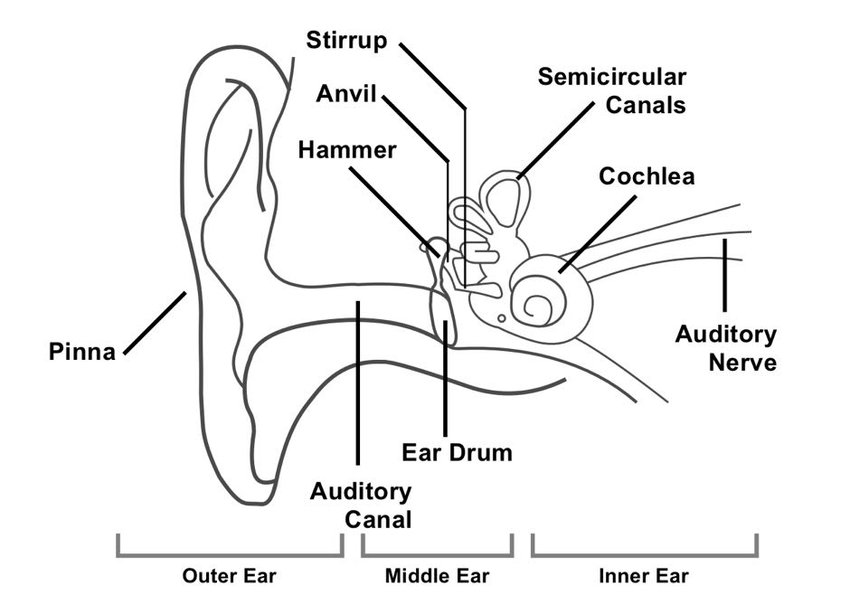Bone conduction headphones are an exciting new technology that has the potential to improve the lives of many people - including those with hearing impairments.
They work by transmitting sound vibrations through the bones in your head, directly to your inner ear. This bypasses the outer ear and middle ear, making them an ideal solution for people with hearing impairments or other problems to those areas.
Given their popularity and interesting mechanism, it's no wonder that people are wondering whether bone conduction headphones are safe.
Below, we’ll discuss how bone conduction headphones work, whether they’re safe to use, and some of the pros & cons.
Traditional headphones
In normal hearing, sound waves from an earbud travel through the air and enter the ear canal, where they eventually reach the eardrum. The eardrum vibrates in response to these sound waves and sends these vibrations to three tiny bones in the middle ear known as the ossicles.
The ossicles transmit these vibrations to the cochlea, a snail-shaped structure filled with fluid that converts the vibrations into electrical impulses. These electrical impulses are then relayed to the brain where they're interpreted as sound.
Bone conduction headphones
With bone conduction headphones, the propagation of sound takes a detour. Instead of the ear canal and reaching the eardrum, they're conducted through the bones of the skull directly to the cochlea.
This allows people with damaged middle and outer ear structures to still enjoy music, make phone calls, and live their lives without being constantly reliant on hearing aids. Your cochlea is still getting the vibrations it needs to interpret sound, just through a different route.
There are two main types of bone conduction headphones: those that sit on or around your ears, and those that go behind your head. The former are more common and usually look like traditional headphones, except that they don't go into your ear canal. Instead, they sit on top of your ear or wrap around it.
The second type of bone conduction headphone are less common, but have certain advantages. Because they don't sit on your ears, they're often more comfortable for people who wear glasses or have sensitive skin. By sitting further back on the skull, they also don't block out as much ambient noise - which might be a good or bad thing, depending on your needs.

Are bone conduction headphones safe?
There's a common misconception that bone conduction headphones are dangerous because they put vibrations directly against your skull. However, the vibrations emitted by these headphones are actually very low-frequency and pose little to no known risks to human health.
In fact, studies have shown that bone conduction headphones can actually be beneficial for people with hearing loss. One study found that people who used bone conduction headphones for four weeks experienced significant improvements in their hearing, while another found that they can help to reduce tinnitus symptoms.
That said, just like any other pair of headphones (tv headphones for example), bone conduction headphones should be used in moderation. Prolonged exposure to loud noise can still damage your hearing, regardless of how the sound is being delivered. When using bone conduction headphones, it's important to take breaks every couple of hours and keep the volume at a comfortable level.
Final thoughts: are bone conduction headphones safe?
In summary, bone conduction headphones are a great option for people looking for new, exciting ways to listen to music, chat over the phone, and enjoy life. They offer a safe and effective mechanism by which they bypass outer and middle ear structures, and deliver sound directly to the cochlea.
While they can be a little harder to use in noisy environments, bone conduction headphones are a life-changing solution for many people. If you're struggling to hear with traditional headphones or find yourself constantly reaching for your hearing aid, they might be worth considering.

Nick Saraev
Writer
Nick is a writer and entrepreneur with a penchant for helping people maximize their health. He's been featured on Popular Mechanics & Apple News, and loves writing on anything & everything related to the human body.

